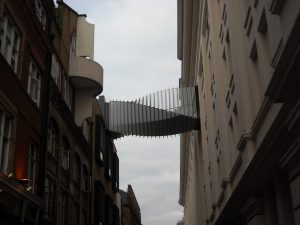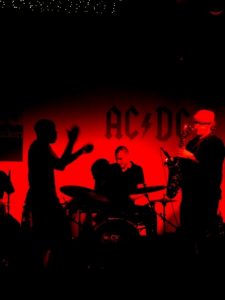Harrod’s may be the most iconic of London’s retail establishments, but don’t let that keep you from visiting other locales. If you’d rather avoid the crowds and get a true taste of what Britain has to offer, try these lesser-known alternatives.

Covent Garden: If you’re looking for quaint oddities amongst architectural splendor, look no further than Covent Garden. Its stalls (centered in the Apple Market section) offer everything from collectibles and antiques to traditional handicrafts with a modern twist. There are a number of cafes and small shops as well, including a store entirely devoted to nautical paraphernalia as well as a subterranean Lush Cosmetics. Simply seeing the sheer number of sparkling soaps they manage to cram into the underground catacombs is worth the visit . Street performers and magicians also regularly grace the plaza their displays.
Oxford Street: For designer labels and big-name brands, Oxford Street is the place to go (but keep in mind that on a Saturday afternoon, you and everyone else in London will be there). Popular shops include Topshop and Topman (the former of which recently made the jump across the pond), Zara, Uniqlo, Mango and Monsoon. Monsoon is known for its boho-chic duds whereas both Zara and Mango feature cutting edge women’s fashion. You’ll also find a number of familiar brands including H&M, French Connection and Swarovski.
Primark: As an undergraduate spending my junior year at Oxford, I used to describe Primark to my American friends as “H&M styles at Walmart prices.” The chain, which made its American debut in Boston, boasts 250 stores across the UK, Ireland, and Europe, and its wares are extremely fashionable and extremely cheap. All of this, of course, comes at a price; in April 2013, a Primark factory building in Bangladesh collapsed, killing more than one thousand workers. The company has paid $14 million in aid and compensation to the victims of the Rana Plaza collapse, but its questionable policies made headlines once again in 2014, when a 25-year old shopper discovered a handwritten note sewn into a dress she had purchased for £10 at the discount chain. The note, presumably written by the garment’s marker, read “forced to work exhausting hours.”
Charity Shops: On the opposite end of the spectrum are the UK’s ubiquitous charity shops. These upscale thrift shops feature secondhand clothing, all of which is sold to raise money for particular charities. Like Oxfam, many offer an array of new products as well, such as fair trade coffees and teas (and while I do not drink instant coffee made in the US, Oxfam’s instant is actually quite decent). The best charity shops are the ones in the city’s wealthiest neighborhoods (the rich, after all, have the greatest castoffs), so plan your bargain hunting accordingly.

Camden Market: While London has some of the greatest markets in Europe (Greenwich, Portabello Road, Old Spitalfieds and of course Covent Garden), my favorite remains Camden Market. Also known as Camden Lock Market, the shopping mecca occupies several city blocks in northwest London (there are subway stops at both ends) with both indoor and outdoor stalls. Many travel guides warn would-be shoppers to steer clear because the huge crowds make easy work for pickpockets, but as long as you exercise a bit of commonsense and don’t keep your wallet in your back pocket, the most colorful (in every sense of the word) of London’s markets is a must-see.
You can find virtually everything: priceless antiques imported from Africa and the Middle East, eco-friendly bamboo clothing, one-of-a-kind designer accessories (I once saw a stall purveying newfangled spats made of floral brocades), and beautiful dresses and skirts made from recycled sari silk. Clothing is available for just about every “alternative” style out there: hippie, punk, goth, and so on. There are some wonderful food stalls as well, but after an exhaustive day of bargain hunting, I always head to Proud Camden, an old horse stable this now part bar and restaurant, part music venue and part art gallery. Individual stables can be reserved for private parties and each features a unique design; some include large HD TVs, karaoke, or even “dance” poles.
Liberty London: If Camden Market isn’t your cup of tea (or if you like pronouncing the word “haberdashery”), head to Liberty London. Don’t let the mock-Tudor façade of dark beams and cream-colored stucco fool you; it may look like a mixture of Shakespeare and Disney, but the British institution is the very embodiment of sophistication. With a £2,000 loan from his soon-to-be father-in-law, Arthur Liberty began selling fabric and objets d’art from Japan and other Eastern countries in 1875. Since then, the Liberty has become a household name in fabric, fashion, and interior design. It’s a great place to shop for Anglophiles (especially if you’re trying to turn your own humble abode into something a bit more like Downton Abbey) but even if wallpaper and prints aren’t your thing, there are plenty of beauty products, shoes and accessories to keep you drooling.

